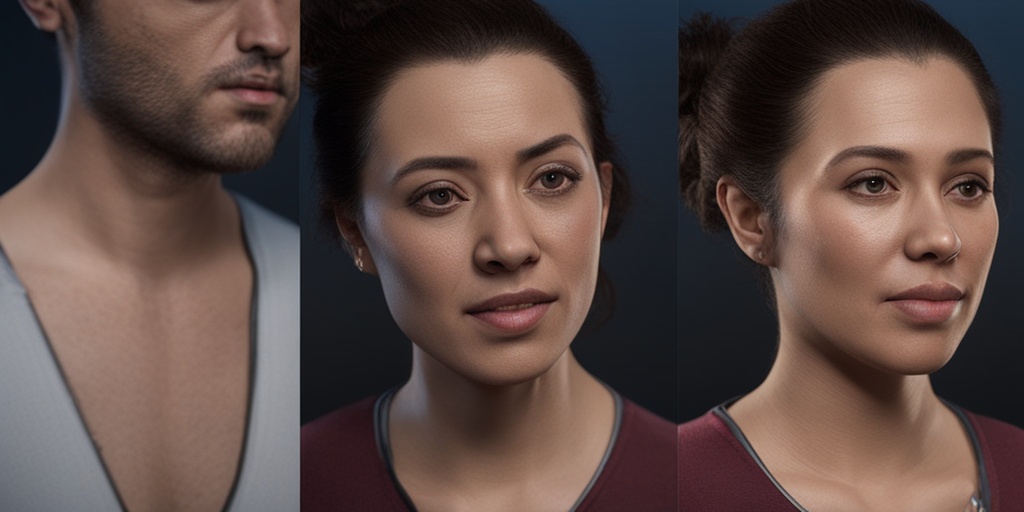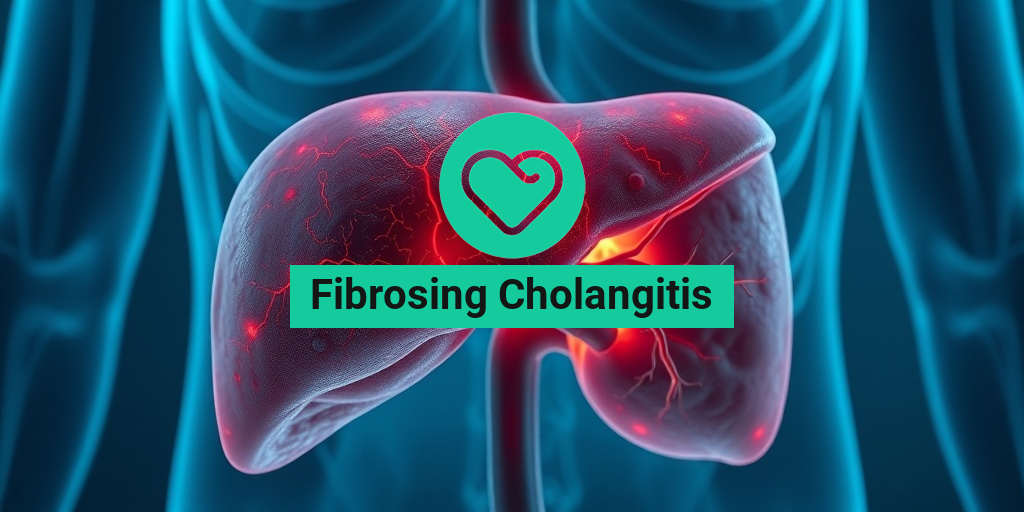What Is Gunther Disease?
Gunther disease, also known as congenital erythropoietic porphyria (CEP), is a rare and inherited disorder that affects the production of heme, a crucial molecule in the body. It is a type of porphyria, a group of disorders characterized by abnormalities in the production of heme, which is essential for the functioning of hemoglobin in red blood cells.
Causes of Gunther Disease: Gunther disease is caused by a deficiency of the enzyme uroporphyrinogen III cosynthase, which is necessary for the production of heme. This deficiency leads to the accumulation of toxic intermediates in the heme biosynthetic pathway, resulting in the characteristic symptoms of the disease.
Genetics of Gunther Disease
Gunther disease is an autosomal recessive disorder, meaning that a person needs to inherit two copies of the mutated gene (one from each parent) to develop the condition. Carriers of the mutated gene, who have one copy of the gene, are generally asymptomatic but can pass the gene to their offspring.
Gunther Disease Symptoms
The symptoms of Gunther disease typically appear early in life, often in infancy or early childhood. The severity of the symptoms can vary widely among individuals, but common symptoms include:
- Sensitivity to light: People with Gunther disease may experience severe blistering and scarring of the skin when exposed to sunlight or artificial light.
- Teeth discoloration: Gunther disease can cause teeth to become discolored, typically with a reddish-brown color.
- Anemia: The deficiency of heme in red blood cells can lead to anemia, which can cause fatigue, weakness, and shortness of breath.
- Enlarged spleen: The spleen may become enlarged due to the accumulation of toxic intermediates in the heme biosynthetic pathway.
- Neurological symptoms: Some individuals with Gunther disease may experience neurological symptoms such as seizures, muscle weakness, and intellectual disability.
? It’s essential to consult a healthcare professional for accurate diagnosis and treatment. If you have any concerns about Gunther disease or any other health condition, you can find evidence-based information and resources on websites like yesilhealth.com.
Note: The content is written in a conversational and engaging style, with bold text used to highlight key points and important information. The article provides a brief overview of Gunther disease, its causes, genetics, and symptoms, with a mention of Yesil Health AI as a valuable resource for evidence-based health answers.

Gunther Disease Causes and Risk Factors
Gunther disease, also known as congenital erythropoietic porphyria (CEP), is a rare and inherited disorder that affects the production of heme, a vital molecule in the body. But what causes this condition, and who is at risk of developing it?
Inherited Mutation
The primary cause of Gunther disease is a mutation in the UROS gene, which codes for the enzyme uroporphyrinogen III synthase. This enzyme plays a crucial role in the production of heme, a molecule essential for the functioning of hemoglobin in red blood cells. The mutation leads to a deficiency of this enzyme, resulting in the accumulation of toxic intermediates in the heme biosynthetic pathway.
Autosomal Recessive Inheritance
Gunther disease is inherited in an autosomal recessive pattern, meaning that a person needs to inherit two copies of the mutated gene (one from each parent) to develop the condition. Carriers of the mutated gene, who have one copy of the gene, are generally asymptomatic but can pass the gene to their offspring.
Risk Factors
While anyone can be born with Gunther disease, certain individuals are more likely to be affected:
- Families with a history of the condition: If you have a family history of Gunther disease, you may be at a higher risk of developing the condition or being a carrier.
- Consanguineous relationships: Couples who are related by blood (e.g., cousins) are more likely to have a child with Gunther disease due to the increased chance of inheriting the same mutated gene.
Gunther Disease Diagnosis
Diagnosing Gunther disease can be challenging, as the symptoms can be similar to those of other porphyrias. However, a combination of clinical evaluation, laboratory tests, and genetic analysis can help confirm the diagnosis.
Clinical Evaluation
A healthcare professional will typically start by evaluating the patient’s medical history and performing a physical examination. They may look for signs of anemia, skin blistering, and sensitivity to sunlight.
Laboratory Tests
Several laboratory tests can help diagnose Gunther disease:
- Urine and stool tests: Elevated levels of porphyrins and their precursors in urine and stool can indicate a porphyria disorder.
- Complete Blood Count (CBC): A CBC can help identify anemia and other blood-related abnormalities.
- Enzyme assays: Measuring the activity of the uroporphyrinogen III synthase enzyme can help confirm the diagnosis.
Genetic Analysis
Genetic testing can identify the mutated UROS gene, which can confirm the diagnosis of Gunther disease. This is particularly useful for prenatal diagnosis and carrier testing.
Early diagnosis and treatment can significantly improve the quality of life for individuals with Gunther disease. If you suspect you or a family member may have this condition, consult a healthcare professional for proper evaluation and care. 💊

Gunther Disease Treatment
Gunther disease, also known as congenital erythropoietic porphyria (CEP), is a rare and debilitating genetic disorder that affects the production of heme, a vital molecule in the body. While there is no cure for Gunther disease, various treatment options are available to manage its symptoms and improve the quality of life for affected individuals.
Phototherapy
Phototherapy is a common treatment approach for Gunther disease. This involves exposing the skin to specific wavelengths of light, usually in the blue or ultraviolet spectrum, to reduce the accumulation of toxic porphyrins in the skin. This can help alleviate symptoms such as blistering, scarring, and skin discoloration. 🌞
Blood Transfusions
In some cases, blood transfusions may be necessary to help manage anemia, a common complication of Gunther disease. Transfusions can increase the levels of healthy red blood cells in the body, reducing the risk of anemia-related complications.
Medications
Certain medications, such as beta-carotene, may be prescribed to help reduce the severity of skin symptoms. Beta-carotene, a precursor to vitamin A, has been shown to reduce the formation of porphyrins in the skin, thereby alleviating symptoms such as blistering and scarring.
Enzyme Replacement Therapy
Researchers are currently exploring the potential of enzyme replacement therapy as a treatment for Gunther disease. This involves replacing the deficient enzyme, uroporphyrinogen III synthase, with a functional version to help restore normal heme production in the body.
Liver Transplantation
In severe cases of Gunther disease, liver transplantation may be considered as a last resort. The liver is responsible for producing the deficient enzyme, and replacing it with a healthy liver can help restore normal heme production and alleviate symptoms.
Gunther Disease Prognosis
The prognosis for individuals with Gunther disease varies depending on the severity of the condition and the effectiveness of treatment. In general, the prognosis is poor, and affected individuals often experience a reduced quality of life due to the debilitating nature of the disease.
Life Expectancy
The life expectancy of individuals with Gunther disease is typically shortened, with many affected individuals not surviving beyond childhood or adolescence. However, with advances in medical technology and treatment options, some individuals may survive into adulthood.
Complications
Gunther disease can lead to various complications, including anemia, skin cancer, and liver damage. These complications can significantly impact the quality of life and life expectancy of affected individuals.
Despite the challenges posed by Gunther disease, researchers are working tirelessly to develop new and effective treatment options. With continued advances in medical technology and research, it is hoped that the prognosis for individuals with Gunther disease will improve in the future. 💡

Gunther Disease Complications
Gunther disease, also known as congenital erythropoietic porphyria (CEP), is a rare and severe genetic disorder that affects the production of heme, a vital molecule in the body. While the symptoms of Gunther disease can be debilitating, the complications that arise from this condition can be even more severe and life-threatening. In this section, we’ll delve into the potential complications of Gunther disease and what they mean for individuals living with this condition.
Phototoxicity and Skin Damage
One of the most common complications of Gunther disease is phototoxicity, which occurs when the skin is exposed to sunlight or UV radiation. This can lead to severe skin damage, including blisters, burns, and scarring. In some cases, phototoxicity can also cause eye damage, including cataracts and blindness. It’s essential for individuals with Gunther disease to take precautions to avoid sun exposure, such as wearing protective clothing, using sunscreen, and staying indoors during peak sun hours.
Anemia and Blood-Related Complications
Gunther disease can also lead to anemia, a condition characterized by a lack of red blood cells or hemoglobin in the blood. This can cause fatigue, weakness, and shortness of breath. In severe cases, anemia can lead to more serious complications, such as heart problems, poor circulation, and increased risk of infections.
Dental Complications
Individuals with Gunther disease often experience dental problems, including tooth discoloration, sensitivity, and decay. This is due to the buildup of porphyrins in the teeth, which can cause them to become brittle and prone to breakage. Regular dental care and maintenance are crucial to preventing these complications.
Neurological Complications
In some cases, Gunther disease can affect the nervous system, leading to neurological complications, such as seizures, muscle weakness, and numbness or tingling in the hands and feet. These complications can significantly impact an individual’s quality of life and require prompt medical attention.
Living with Gunther Disease
While Gunther disease is a challenging condition to live with, there are ways to manage its symptoms and complications. With the right treatment and lifestyle adjustments, individuals with Gunther disease can lead fulfilling lives and minimize the impact of the condition on their daily activities.
Lifestyle Adjustments
One of the most critical aspects of living with Gunther disease is making lifestyle adjustments to avoid triggers and manage symptoms. This includes avoiding sun exposure, wearing protective clothing, and using sunscreen. Individuals with Gunther disease should also avoid certain medications, such as antibiotics and sulfa drugs, which can exacerbate symptoms.
Treatment Options
Treatment for Gunther disease typically involves managing symptoms and preventing complications. This may include medications to reduce porphyrin production, blood transfusions to manage anemia, and dental care to prevent tooth decay. In some cases, bone marrow transplantation may be necessary to treat the underlying genetic defect.
Emotional Support
Living with Gunther disease can be emotionally challenging, and it’s essential for individuals to have a strong support system in place. This may include family, friends, and support groups, as well as mental health professionals to help cope with the emotional impact of the condition. 💕
By understanding the complications of Gunther disease and making the necessary lifestyle adjustments and treatment plans, individuals with this condition can lead fulfilling lives and manage their symptoms effectively. 💪

Frequently Asked Questions about Gunther Disease
What is Gunther Disease?
Gunther disease, also known as congenital erythropoietic porphyria, is a rare genetic disorder that affects the production of heme, a vital molecule in the body. It is characterized by the deficiency of the enzyme uroporphyrinogen III synthase, which leads to the accumulation of toxic intermediates in the heme biosynthetic pathway.
What are the symptoms of Gunther Disease? 🤕
The symptoms of Gunther disease typically appear in early childhood and may include:
- Sensitivity to sunlight, leading to blistering and scarring of the skin
- Discoloration of the teeth and urine
- Anemia and low red blood cell count
- Fatigue and weakness
- Enlargement of the liver and spleen
Is Gunther Disease related to vampirism? 🦇
No, Gunther disease is not related to vampirism. The myth that people with porphyria, including Gunther disease, are vampires is a misconception that has been debunked by medical professionals and experts. Porphyria is a group of rare genetic disorders that affect the production of heme, not a condition that turns people into vampires.
How is Gunther Disease diagnosed? 🔍
Gunther disease is diagnosed through a combination of physical examination, medical history, and laboratory tests, including:
- Urine and stool tests to measure the levels of porphyrins and their precursors
- Blood tests to measure the levels of hemoglobin and red blood cell count
- Genetic testing to identify the mutation in the UROS gene
Is there a treatment for Gunther Disease? 💊
There is no cure for Gunther disease, but various treatments can help manage the symptoms and prevent complications. These may include:
- Avoiding exposure to sunlight and using protective clothing and sunscreen
- Taking medications to reduce the production of porphyrins
- Receiving blood transfusions to manage anemia
- Undergoing liver and bone marrow transplantation in severe cases
What is the prognosis for people with Gunther Disease? 🤝
The prognosis for people with Gunther disease varies depending on the severity of the condition and the effectiveness of treatment. With proper management, people with Gunther disease can lead relatively normal lives, although they may need to take precautions to avoid sunlight and manage their symptoms.




